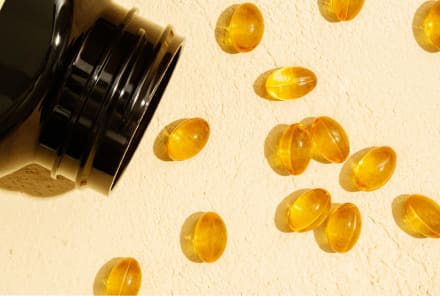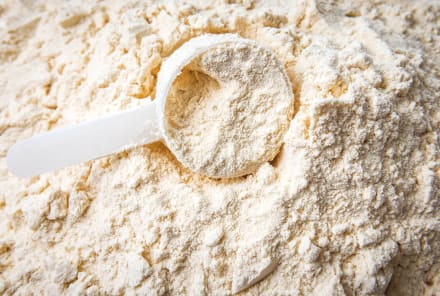Advertisement

The wellness space is ever-shifting, with fresh technologies and innovations constantly rewriting how we can relate to ourselves and our world in a healthier way. Comparatively, the feminine hygiene market has stayed relatively stagnant over the years.
But listen up, ladies (and gents): We have entered a period revolution of sorts—one marked by a growing dialogue around how menstruation really affects our bodies and how we can choose to welcome it. Health-conscious consumers who are selective about the food they eat and the products they put on their skin are starting to apply the same level of care to their period products. The rise of organic tampons and period subscription boxes speaks to the start of this shift but certainly not the end of it.
Enter the menstrual cup.
Though they've actually been around since the 18th century, menstrual cups just may be the next wave of period companion. With over 50 brands on the market today, the revival of the cup marks a new way to experience your time of the month, sans tampon or pad.
Here are a few reasons to give this better-for-you, better-for-the-planet protection a go:
1. They're easier on the environment.
The average woman discards up to 14,000 tampons in her lifetime, and these can sit around in landfills for centuries, leaching various surfactants, adhesives, and additives. When you consider that the production of (non-organic) tampons can involve harsh chemical pesticides, too, these products become really unsustainable really fast. Menstrual cups, on the other hand, are environmentally friendly and virtually waste-free. With proper care, you can use the same menstrual cup for up to 10 years. Compare that to the 10 days that it takes most of us to go through a box of standard tampons or pads.
2. They are less likely to cause TSS.
Toxic shock syndrome (TSS) is a potentially life-threatening condition caused by the buildup of Staphylococcus aureus bacteria. While it doesn't exclusively strike women during their periods, tampons are common culprits1 because they create a moist, bacteria-prone environment when left in the body for too long. Cups collect menstrual blood instead of absorbing it, so they don't carry the same risk. You can safely leave them in for up to 12 hours—even overnight!
3. They're WAY easier to use than you think.
According to Vili Petrova, the founder of LENA Cup, the majority of women who are hesitant to try a menstrual cup cite its seemingly difficult application as their biggest concern. Most of these worries are totally unfounded in the end, and 91 percent of LENA first-time users are able to successfully use the product. Though sometimes they take a while to get the hang of using (and let's be real, what doesn't?), the cups are no more burdensome a solution than tampons—they're just not as familiar. "The tampon industry has done a great job disconnecting us from our bodies," Petrova says. "With menstrual cups, you do have to touch yourself a bit—but hey, that's not necessarily a bad thing."
4. They're convenient and comfortable.
While it can be painful and potentially dangerous to insert a tampon before your period begins (doing so can dry out your vagina and leave behind cotton fiber residue), it's totally safe to put a menstrual cup in early, so you never have to worry about your time of the month catching you off guard. Once the cup is in, it's so comfortable that you'll forget you even have your period for the next dozen hours.
You'll notice (or rather, not notice) a distinct lack of sensation and odor when using the cup. If it's inserted properly, you genuinely won't feel the cup, making it perfect for just about every kind of activity out there. No shying away from certain activities while you've got your period anymore! Plus, you never have to buy emergency tampon boxes again. Buh-bye, womanly woes.
5. They take the guesswork out of your period.
The FDA doesn't require that feminine care brands list all of the ingredients in their products, so your tampons and pads could potentially contain various synthetic fibers, GMO cotton, and pesticides, depending on what brand you're using.
Menstrual cups are period companions that stay with you over time, so as long as you choose the right one to start (look for ones that are made of medical-grade silicone and dyes, and free of BPA and latex, like LENA's), you're good to go. But the most important step in choosing a menstrual cup is to check that it is registered with and regulated by the FDA; there are tons of cups on the market that are made from unregulated materials that are often not intended to be used in the body, which is a scary thought. Find companies that are transparent in their processes and messaging, like LENA Cup, and you can rest easy knowing you're doing the best possible thing for your period, your environment, and your body.


















